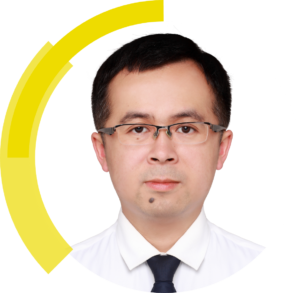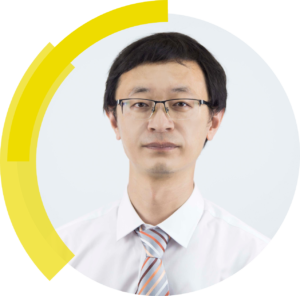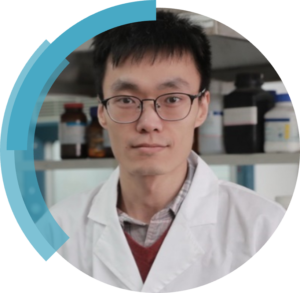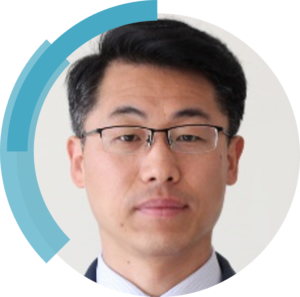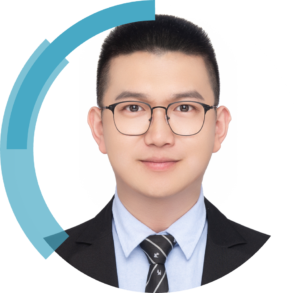Introducing Materials Horizons’ Emerging Investigators 2022.
This year we are pleased to celebrate the tenth anniversary of Materials Horizons. We are so grateful to our fantastic community of authors, reviewers, Board members and readers and wanted to showcase just some of them in a series of ‘Community Spotlight’ blog articles.
In our fifth ‘Community Spotlight’, we feature some of our past ‘Emerging Investigators’ who have contributed their outstanding research to Materials Horizons.
Our Emerging Investigators series highlights early career scientists who have excelled in their field and work to provide quality research and communications in order to contribute to the constant evolution of chemical sciences. We asked some of our past Emerging Investigators about their experience as up-and-coming researchers and how their work has developed from early career stage to now. Check out their interview responses below.
| Dr. Filip Podjaski, Emerging Investigator 2022
Imperial Collage London, UK |
“My parents immigrated from Poland to Germany when I was a child. I grew up bilingually, which was very helpful to learn foreign languages (English, French, Spanish, Russian) and to get in touch with different cultures and mindsets. Since adolescence I was fascinated by the natural sciences and what technologies they enable. Consequently, I studied physics, at the University of Göttingen (D) and in Lyon (FR) with a focus on material properties and energy related applications.
During my PhD in the Nanochemistry department (Prof. Lotsch) at the MPI for Solid State Research (D) and at EPFL (CH), I broadened my horizons in physical chemistry and worked on photocatalysis and electrocatalysis for green hydrogen production as well as on organic materials combining light absorption and battery like energy storage intrinsically – a new and promising technology still fascinating me. I hence stayed at MPI as postdoc and became group leader to drive its development for 3 more years. Research placements at UC Santa Barbara, USA (Prof. Seshadri) and in the Institute of Material Science Seville, ES (Prof. Míguez) strongly enriched me.
Since August 2022, I am a UKRI Research Fellow in the group of Prof. James Durrant, Imperial College London (UK), where I deepen my knowledge in probing fundamental photophysical properties of light driven organic semiconductors on different time scales to better understand and tailor their function for solar fuel production.
My research interests are related to energy conversion applications and tailored material property modifications, which can be driven by light or electricity. They span over the disciplines of physics and chemistry, and partially affect biomedical applications.
Being concerned by increasing environmental challenges, I focus on fundamental processes of electrocatalytic and photocatalytic renewable fuel synthesis, mostly for green hydrogen production. Especially complex and organic based semiconductor systems fascinate me in this context, since they are tailorable bottom-up in principle in their structure and function. But there is much to discover about their photophysical properties and its coupling to performance. At Imperial College London, I currently investigate which chemical adaptations are helpful to make organic photocatalysts work efficiently in more natural environments, and not only in ultra-pure lab conditions.
Photocharging materials and resulting property modification effects are my other main research interest. Such a function typically relies on ionic interactions and goes in hand with energy and information storage. But relatively little is known about this growing field. I am keen to explore their thermodynamic and kinetic property requirements, to establish efficient structure-property relationships and new technological applications for such novel and adaptive materials. Examples for photocharging materials’ applications I recently showed with colleagues are solar batteries that enable to use renewable electricity on demand, or photo-memristive sensors that intrinsically store concentration information of analytes they can interact with in biological contexts. Light-driven micro-robotics I studied with colleagues from MPI-IS (Prof. Sitti) in biological contexts are another practical example. Remote charging or propulsion by light, as well as its use for local sensing and drug delivery has exciting potential. And if such materials and devices were tailored from organic semiconductors, more technology could become fully green and sustainable.”
What inspired you to pursue a career in your specific field of research?
“Primary inspiration probably came from good teachers at school (math, physics, chemistry). I chose a career in applied natural sciences for three reasons: (i) personal curiosity for profound understanding of physics and chemistry and how this translates into technology, (ii) for altruistic reasons – I wanted to contribute something good, new and lasting to our society by research and development, and (iii) because of my creativity and joy in working with different people, which in my opinion is best applied in natural sciences and with academic freedom. Research on renewable energy conversion and sustainable fuel production (photocatalysis, electrocatalysis) was my first choice due to its obvious immediate need, and because it requires interdisciplinary knowledge I wanted to develop. My enthusiastic PhD supervisors Prof. Bettina Lotsch and Prof. Anna Fontcubetra i Morral, as well as my current host and mentor Prof. James Durrant further inspired me as people who take a lot of joy and personal energy from driving fundamental research and understanding. Further inspiration comes from amazing community feedback on the relatively new topic of photocharging materials. I want to focus even more on it in future – for its relevance to energy supply technology and its broad applicability beyond (see next question). The interdisciplinary and creative research required here is also a beautiful challenge and inspiration to me.”
What are some of the current trends or emerging areas of research within your field that you find particularly exciting or promising?
“I think the relatively young research area of photocharging materials is particularly exciting and promising. Combing the function of solar cells and batteries in single bifunctional materials is what I feel is highly demanded in times of climate change and (potential) conflicts arising for access to natural resources. However, photo-battery concepts relying on such bifunctional materials are still scarce, have very limited efficiencies and require much more research. Photocharging effects can in principle also affects materials used for photoelectrochemistry or photocatalysis, which become more efficient due to doping or trap passivation going in hand with photo-induced charge accumulation. In parallel, structural and physical or chemical material properties can be modified by photocharging, akin to photo-switches. Their analysis can be used for sensing applications. Related research areas are the just emerging optoionics, where light induces changes in ionic concentrations and conductivity, thereby potentially improving material performance. Since photocharging can also be seen as memristive effect that captures light driven processes over time, its use for information processing is also foreseeable. Memristors as logical circuit elements are also being discussed for so called neuromorphic computing and information processing applications that could well interface with next generation IT or biomedical applications. I would be happy to help developing these areas. It represents a complex field bridging semiconductor physics, battery research, electrochemistry, photocatalysis and engineering, which are rarely combined. So little people have a holistic view and understanding. But I hope that it will change soon and that more and more people will follow up.
In terms of solar fuel production, I think that hydrogen is obviously of highest relevance. Especially when it comes to its generation by cost-efficient organic based materials and in more natural conditions, which is rarely the case, more research is needed. We need hydrogen not only as energy carrier, but also for other (photo)synthetic process such as syngas and ammonia production. In line with this, I am highly convinced of the promise in nitrogen reduction research, since ammonia is one of the products. Besides being a convenient, safe and high energy density fuel, it is also required for many industrialized processes and fertilizer synthesis, while already having a good distribution infrastructure.”
Read Filip’s featured Materials Horizons article here:
Photomemristive sensing via charge storage in 2D carbon nitrides.
Andreas Gouder, Alberto Jiménez-Solano, Nella M. Vargas-Barbosa, Filip Podjaski and Bettina V. Lotsch.
Mater. Horiz., 2022,9, 1866-1877. DOI: 10.1039/D2MH00069E
| Dr Jie Jang, Emerging Investigator 2022
Central South University, China |
Jie Jiang is an Associate Professor of School of Physics and Electronics at Central South University. He obtained the B.E. degree (2007), M.E. degree (2009), and the Ph.D. degree (2012) from Hunan University. He was a Post-doctoral Fellow in Nanyang Technological University (2012-2013 in Singapore) and Auburn University (2014-2015 in USA), respectively. His research interests focus on neuromorphic photoelectric hybrid devices based on thin-film oxide and 2D semiconductor materials. He is the Youth Editor in Nano-Micro Letters, Science China-Materials, Brain-X, International Journal of Extreme Manufacturing. He has published as first author/corresponding author about 60 papers which are often highlighted by NPG Asia Materials, Material Views-China, X-MOL, etc.
What inspired you to pursue a career in your specific field of research?
“When I was young, I was very interested in nature. When I grew up, I was more interested in the mathematics. However, I wanted to start my research career facing modern industry. Therefore, my current research is focused on the advanced semiconductor devices, especially for the neuromorphic intelligent devices.”
How would you summarise the research which lead to your recognition as an Emerging Investigator for Materials Horizons?
“I think the polarization light detector has seen growing attention. However, my research demonstrates that it can also extended to be used in the polarization-sensitive neuromorphic computing which has been never reported. It may provide a promising opportunity for the next-generation of intelligent optoelectronics.”
Since becoming an Emerging Investigator, how do you feel your research has developed over time?
“I am very honored to be an Emerging Investigator. It seems that my research has gone well since.”
What are some of the current trends or emerging areas of research within your field that you find particularly exciting or promising?
“I think the chip-integrated neuromorphic electronics and polarization-perceptual neuromorphic optoelectronics are two exciting points in my research field.”
What advice would you give to aspiring scientists who hope to make a significant impact in their respective fields?
“The interest is most important thing. The research should also be guided toward the direction which is most different from others.”
What are some of the main challenges or obstacles you have encountered while conducting your research, and how have you overcome them?
“Sometimes my lab doesn’t have the equipment we need. Therefore, we must either get help from others or do the work that we can.”
Read Dr Jang’s featured Materials Horizons article here:
Dingdong Xie, Kai Yin, Zhong-Jian Yang, Han Huang, Xiaohui Li, Zhiwen Shu, Huigao Duan, Jun He and Jie Jiang.
Mater. Horiz., 2022,9, 1448-1459. DOI: 10.1039/D1MH02036F
| Dr Mohammad Mirkhalaf, Emerging Investigator 2022
Queensland University, Australia. |
Mohammad Mirkhalaf is a Lecturer and ARC DECRA fellow at the Queensland University of Technology (QUT). He has obtained his PhD from McGill University, Master’s from Nanyang Technological University (NTU), and Bachelor’s from Isfahan University of Technology (IUT). After finishing PhD in 2015, he joined the National Research Council of Canada as a postdoctoral fellow working closely with his previous lab at McGill till August 2018 when he joined the University of Sydney. He joined QUT in Jan 2022. His research is on tailoring materials’ internal architecture to achieve properties and functionalities beyond those of constituents.
What inspired you to pursue a career in your specific field of research?
“We are all part of nature. After all, we can be perceived as live materials with intelligence. Doing research in natural and bioinspired materials has been perhaps a way for me to try to understand nature and, as such, human better.”
How would you summarise the research which lead to your recognition as an Emerging Investigator for Materials Horizons?
“Besides research, recognition is a result of being with supportive and understanding people. Let us pay our deepest respect to the people who contribute to providing supportive environments for their younger (and usually less experienced) colleagues.
In terms of research, whatever is triggered by scientific curiosity is exciting: enthusiasm to understand something better or to develop something new or more efficient brings the capacity to do so. We should just not forget that it takes time and continuous effort. I think the research that was kindly highlighted in the emerging investigator series was driven by the excitement to find a way to form ceramics into complex shapes using an efficient and relatively easy pathway.“
Since becoming an Emerging Investigator, how do you feel your research has developed over time?
“I think trust is a fundamental element in progress. Trust in your ability to do something but also trust in people who are there to help you. I think being featured as an emerging investigator strengthened both elements (of trust) in me. Thanks for the opportunity.”
What are some of the current trends or emerging areas of research within your field that you find particularly exciting or promising?
“We do certain things to pay our bills and have a protective roof. But beyond that, whatever we do should be responsibly done for the next generations. They are our continuation. With their being is our being. So in the future, I will aim to find ways to perform my research (which is on developing new materials and architectures) sustainably from nature, for nature (all beings), to nature.
We are going to lack resources and so are in search of life/resources on other planets. Much research, including on new materials, is channelled towards this goal. The question is: if in this search for life in other planets, we are harming our own earth, aren’t we defeating the purpose? We perhaps need to first keep our mother earth as intact as possible through sustainable technologies and then satisfy our other curiosities based on this principle of sustainability. We (scientists and engineers) can play a major role here. Other areas that interest me currently are using engineering mechanisms to reversibly and drastically tailor the internal architecture of materials, and the ethical aspects of live materials and artificial intelligence.”
What advice would you give to aspiring scientists who hope to make a significant impact in their respective fields?
“I am still in the early- to-mid stages of my career, so I am not sure if I am eligible to answer this question. But I am happy to have a discussion on this. I guess one important aspect is to go to the core of the problem. Every problem has a surface, but the beauty lies within the deeper layers. For example, a few hundred years ago, a designer could think of this problem: how thick the feet of a wooden chair should be to resist one’s weight? Or going to deeper layers, one could ask: what governs the deformation and failure of the chair’s feet? How can we prevent excessive deformation/failure? Are these governing rules the same for all materials? Trying to answer the latter set of questions has led to significant contributions to the mechanics of materials. Answering the former question would result in a chair on which people could sit. Both are valuable but satisfy different desires.
I think another key is trust as we discussed. There are elite people in academia who know much more than early career researchers about academic progress/potential. Being in touch with these people and trusting them brings stability and focus to a curious soul.”
What are some of the main challenges or obstacles you have encountered while conducting your research, and how have you overcome them?
“Our biggest enemy lies within us. In search of truth, one should be truthful. I must admit it might be hard for a scientific mind to carry the burden of a societal construction and politics that tend to be quite good at (sometimes) bending the truth. But we (humans) have made significant progress in discovering the essence of things properly, and I think we will get better. Intellectuals, many of whom work in academia (including my current and previous mentors), have taught us the way to scientific discoveries: reading/understanding the literature, discussing it, accepting criticisms and strong arguments even though they go against our thoughts, fact-checking, and readiness to reconstruct thoughts if needed. These are the principles I try to follow to tackle challenges. Thanks for the opportunity to discuss thoughts.”
Read Mohammad’s featured Materials Horizons article here:
Rationally-designed self-shaped ceramics through heterogeneous green body compositions.
Zizhen Ding, Hala Zreiqatbc and Mohammad Mirkhalaf.
Mater. Horiz., 2022,9, 2762-2772. DOI: 10.1039/D2MH00785A
| Dr Kai Wang, Emerging Investigator 2022
Soochow University, China |
Kai Wang received his BSc degree from the Department of Materials Science and Engineering, Beihang University in 2012, and received his PhD degree from the Technical Institute of Physics and Chemistry of Chinese Academy of Sciences in 2017. Then, he carried out postdoctoral research at the Institute of Functional Nano & Soft Materials (FUNSOM), Soochow University. Now, he is an associate professor at Soochow University. His research interest mainly focuses on high-performance organic optoelectronic materials and their device applications.
How would you summarise the research which lead to your recognition as an Emerging Investigator for Materials Horizons?
“The purpose of the research is to address fundamental questions regarding the spectral broadening and concentration quenching in solid-state multiple resonance (MR) type thermally activated delayed fluorescence (TADF) systems. Previous studies often overlooked or briefly mentioned these issues as they focused primarily on developing new materials. However, these issues are crucial in understanding the behaviour of MR-TADF systems in solid states. Our research is the first to comprehensively investigate and provide answers to these general questions. We have determined that spectral broadening is caused by the formation of excimers resulting from π-π interactions, while concentration quenching is a result of triplet exciton annihilation. These findings are essential for a deeper understanding of the behaviour of MR-TADF systems.”
What are some of the current trends or emerging areas of research within your field that you find particularly exciting or promising?
“In my view, the emerging category of materials known as multiple resonance (MR) emitters and their associated device applications are highly promising in the realm of organic light-emitting diodes (OLEDs). These materials have the ability to achieve remarkably efficient narrowband emission, surpassing even that of inorganic systems. This challenges our existing understanding of organic systems and allows OLEDs to remain competitive in the era of ultrahigh definition displays. Moreover, they hold significant potential for use in organic laser diodes, a shared aspiration among researchers in the field of organic optoelectronics.”
Read Kai Wang’s featured Materials Horizons article here:
Feng Huang, Xiao-Chun Fan, Ying-Chun Cheng, Hao Wu, Yi-Zhong Shi, Jia Yu, Kai Wang, Chun-Sing Lee and Xiao-Hong Zhang.
Mater. Horiz., 2022,9, 2226-2232. DOI: 10.1039/D2MH00511E
We hope you enjoy reading these interviews from our Emerging Investigators. You can find all our past Emerging investigator editorials and featured articles here:
Emerging Investigators 2020/2021
Emerging Investigators 2022/2023
Or to read more of our community spotlight blog, return to the home page here



